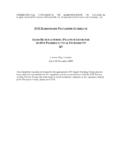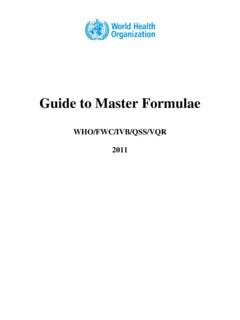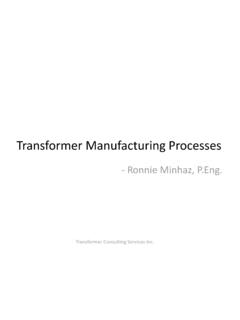Transcription of Annex 2 W HO good manufacturing practices for active ...
1 130 World Health OrganizationWHO Technical Report Series, No. 957, 2010 Annex 2W HO good manufacturing practices for active pharmaceutical ingredients1. Introduction Objective Regulatory applicability Scope2. Quality management Principles Responsibilities of the quality unit(s) Responsibility for production activities Internal audits (self-inspection) Product quality review3. Personnel Personnel qualifi cations Personnel hygiene Consultants4.
2 Buildings and facilities Design and construction Utilities Water Containment Lighting Sewage and refuse Sanitation and maintenance5. Process equipment Design and construction Equipment maintenance and cleaning Calibration Computerized systems6. Documentation and records Documentation system and specifi cations Equipment cleaning and use record Records of raw materials, intermediates, API labelling and packaging materials Master production instructions (master production and control records) Batch production records (batch production and control records) Laboratory control 11:03131 Batch production record review7.
3 Materials management General controls Receipt and quarantine Sampling and testing of incoming production materials Storage Re-evaluation8. Production and in-process controls Production operations Time limits In-process sampling and controls Blending batches of intermediates or APIs Contamination control9. Packaging and identifi cation labelling of APIs and intermediates General Packaging materials Label issuance and control Packaging and labelling operations10.
4 Storage and distribution Warehousing procedures Distribution procedures11. Laboratory controls General controls Testing of intermediates and APIs Validation of analytical procedures Certifi cates of analysis Stability monitoring of APIs Expiry and retest dating Reserve/retention samples12. Validation Validation policy Validation documentation Qualifi cation Approaches to process validation Process validation programme Periodic review of validated systems Cleaning validation Validation of analytical methods13.
5 Change control14. Rejection and reuse of materials Rejection Reprocessing Reworking Recovery of materials and 11:03132 Returns15. Complaints and recalls16. Contract manufacturers (including laboratories)17. Agents, brokers, traders, distributors, repackers and relabellers Applicability Traceability of distributed APIs and intermediates Quality management Repackaging, relabelling and holding of APIs and intermediates Stability Transfer of information Handling of complaints and recalls Handling of returns18.
6 Specifi c guidance for APIs manufactured by cell culture/fermentation General Cell bank maintenance and record keeping Cell culture/fermentation Harvesting, isolation and purifi cation Viral removal/inactivation steps19. APIs for use in clinical trials General Quality Equipment and facilities Control of raw materials Production Validation Changes Laboratory controls Documentation20.
7 GlossaryReferencesAppendix 1 List of references for related WHO guidelinesAppendix 2 General notes: additional clarifi cations and explanationsThis text is based on the International Conference on Harmonisation (ICH) Q7: good manufacturing Practice Guide for active Pharmaceutical Ingredients. November 10:371331. ObjectiveThis document (guide) is intended to provide guidance regarding good manufacturing practices (GMP) for the manufacturing of active pharmaceutical ingredients (APIs) under an appropriate system for managing quality.
8 It is also intended to help ensure that APIs meet the requirements for quality and purity that they purport or are represented to this guide manufacturing is defi ned to include all operations of receipt of materials, production, packaging, repackaging, labelling, relabelling, quality control, release, storage and distribution of APIs and the related controls. In this guide the term should indicates recommendations that are expected to apply unless shown to be inapplicable or replaced by an alternative demonstrated to provide at least an equivalent level of quality assurance.
9 For the purposes of this guide, the terms current good manufacturing practices and good manufacturing practices are guide as a whole does not cover safety aspects for the personnel engaged in the manufacture, nor aspects of protection of the environment. These controls are inherent responsibilities of the manufacturer and are governed by national guide is not intended to defi ne registration and fi ling requirements or modify pharmacopoeial requirements. This guide does not affect the ability of the responsible regulatory agency to establish specifi c registration or fi ling requirements regarding APIs within the context of marketing or manufacturing authorizations or pharmaceutical applications.
10 All commitments in registration and fi ling documents must be Regulatory applicabilityWithin the world community, materials may vary as to the legal classifi cation as an API. When a material is classifi ed as an API in the region or country in which it is manufactured or used in a pharmaceutical product, it should be manufactured according to this ScopeThis guide applies to the manufacture of APIs for use in fi nished pharmaceutical products (FPPs). It applies to the manufacture of sterile APIs only up to the point immediately prior to the APIs being rendered sterile.















